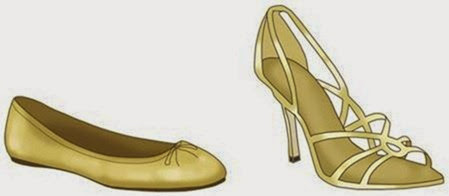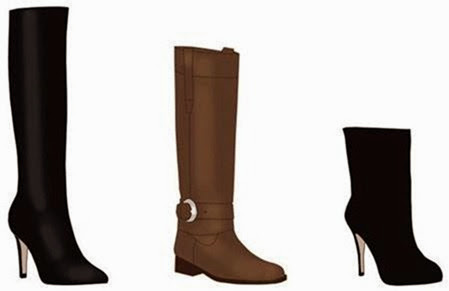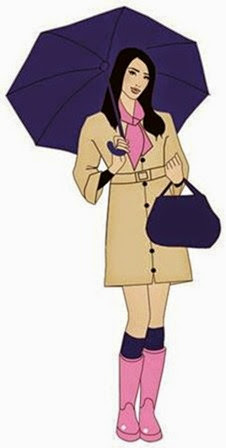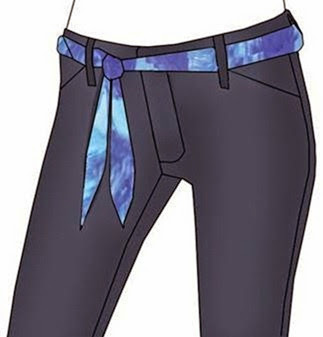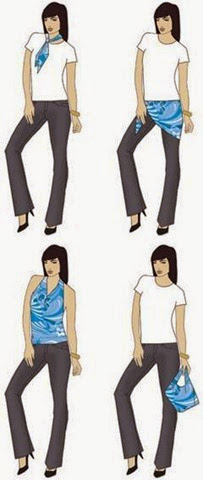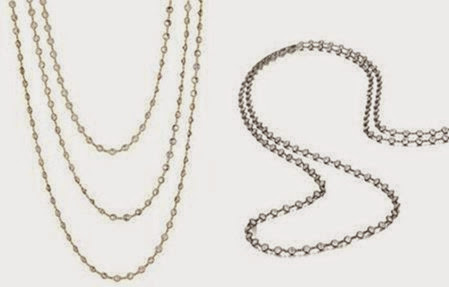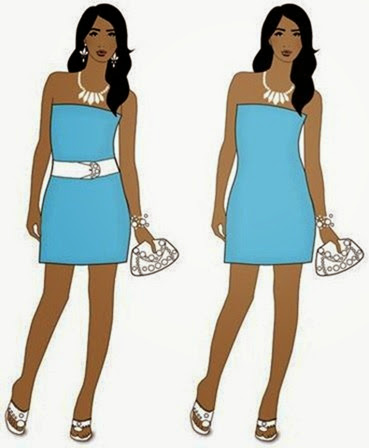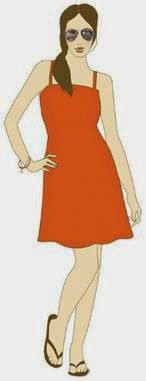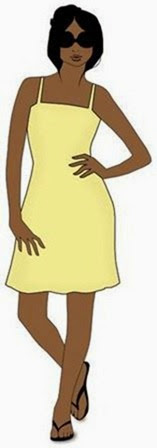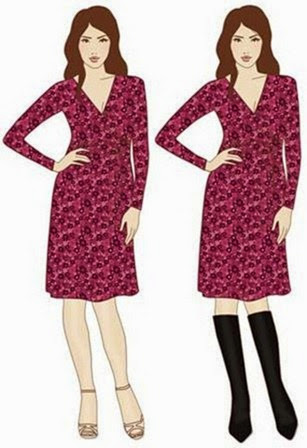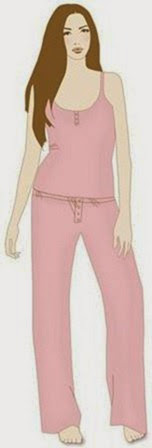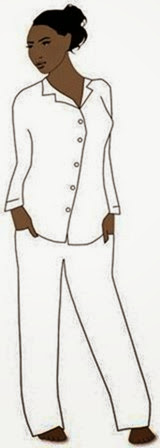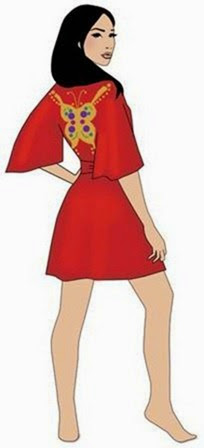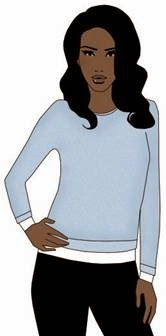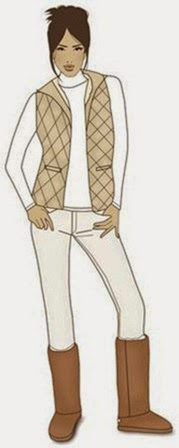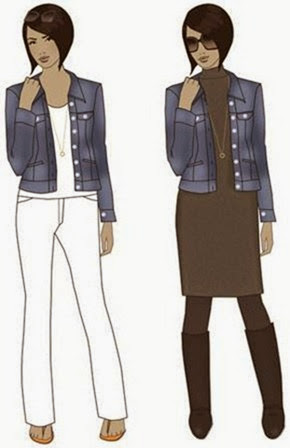Putting Your Best Foot Forward: Shoes
In This Chapter
▶ Discovering your proper shoe size
▶ Shopping for shoes
▶ Examining shoe styles, from pumps to boots
Your obsession with shoes may have begun when you were 2 years old and you stepped into a pair of your mother’s high heels.
Eventually you grew up enough to shop for your own. How much fun! Carrie Bradshaw from Sex and the City took shoe shopping to a whole new level. Whether you live in a big city, in the suburbs, or on a farm, every woman should strut in style!
The great thing about new shoes is that they can reinvent any outfit in your closet. That little black dress you already own, for example, will look so much better with a fabulous new pair of strappy sandals. Buying a new pair of shoes also gives you that extra boost of confidence and makes you feel sexier with every step. This chapter shows you how to shop for comfortable, stylish shoes without breaking the bank.
Crash Course in Shoe Shopping
When you’re heading out the door to go shoe shopping (lucky you!), first make sure you know what you’re looking for. If warmer weather is coming and you don’t have any sandals to go with your dresses, for example, then plan to buy a great pair of strappy shoes. Or if you have a garment you’d love to wear but don’t have the right shoes to go with it, keep an eye out for just the right shoe. I once had a fabulous dress in fuchsia, but didn’t have the right shoes to wear with it until I found the perfect pair of gold high-heel sandals.
My point? Have a goal when heading into a shoe store. Taking this approach makes your shopping excursion both practical and fun. Without a plan, shoe shopping is going to hurt your wallet, not your feet.
First steps: Getting ready
Just as with clothing, do your research and prepare before you go shoe shopping:
✓ Look through some fashion magazines to see what’s in style. Are chunkier heels or stilettos in style? Are toes pointy or more rounded? What height are the boots? Are flats in? With an idea of what you’re looking for, you’re better prepared to hit the stores without all the choices overwhelming you.
Some of the trendier designs probably won’t be in style for very long. If you decide to go with something very trendy, try to find an inexpensive version. That way, when the trends change in the coming season, you haven’t wasted a ton of money on shoes you don’t want to wear anymore.
✓ Make sure you have the right hose or socks when you go to try on shoes. If you’re looking for sneakers, you need the kinds of socks you’d wear with the sneakers. If you’re buying pumps or boots, you need a thin sock or stocking — whatever you plan to wear underneath. (Most shoe stores provide stocking-like disposable peds you can use when you try on shoes.) Because sandals are worn with bare feet, you’ll be fine when trying those on.
If you know you’ll be shopping for shoes, make sure the footwear you have on comes off easily, especially if you’re visiting more than one store. Who wants to waste time tying laces when you could be looking for more potential buys!
Paying attention to fit
I love the look of high heels. I think many outfits look better and sexier when heels are worn. With that said, I am a huge fan of flats, too. Regardless of whether you’re wearing heels or flats, neither will be comfortable if it doesn’t fit properly. That’s why in this section I begin with the basics: how to find the right shoe size for you.
Measuring your feet — both of them
Taking an accurate foot measurement requires more than just slipping your foot into one of those foot measurement devices. To get the right measurement, follow these suggestions:
✓ Make sure to get both feet measured at a shoe store. Your feet may not be the same size. It’s not uncommon for one foot to be bigger than the other. A slight difference between one foot and the other may not matter, but if the difference is as much as half a size, it does. If one foot is bigger than the other, buy footwear that fits the bigger foot.
✓ Stand on the foot measurement device, rather than put your foot on it while sitting. Your foot gets wider when you stand.
✓ Get your feet measured toward the end of the day. Feet tend to swell as the day goes along. At the end of the day, they’re at their fullest.
✓ Get your feet re-measured every so often. As you age, your foot size may change.
Taking shoe shape into consideration
Just because you know the size of your feet doesn’t necessarily mean that every shoe of that size fits you comfortably. The basic shape of the shoe is called the last (see Figure 16-1). Variations in the last can mean that, while one size 8 shoe fits you like a glove, another size 8 shoe could be too big or too small.
When you try on shoes, pay attention to how they feel. While the level of comfort a shoe provides should be apparent, here are a few specific things to look for:
✓ The toe box: This is the part of the shoe where your toes go. You want the toe box to be big enough to accommodate all five of your toes comfortably. If it’s too big, your foot will slide around and you’ll end up with blisters. And if it’s too small (your toes will be a little cramped when you try them on), you’ll wish you never bought them after only a few hours wearing them.
 ✓ The vamp: This part of the shoe covers the top of the foot. Depending on how high the arch of your foot is, a shoe vamp may or may not fit comfortably. Different brands cut differently, so find one that fits you correctly.
✓ The vamp: This part of the shoe covers the top of the foot. Depending on how high the arch of your foot is, a shoe vamp may or may not fit comfortably. Different brands cut differently, so find one that fits you correctly.
✓ Sole: One part that you’re probably very familiar with, the sole is the bottom of the shoe. The soles of sneakers have ridges and are made of rubber to provide traction, while leather soles are thinner and more fashionable. Dancing, anyone? The thicker the sole, the more comfort- able walking is, because the thickness protects your feet from the hard ground below.
✓ Counter: The counter is the back part of the shoe. If there’s too much space between the back of your foot and the counter, your foot moves too much, and all that rubbing will cause a blister. As long as the shoe fits your foot properly in every other way, try the next shoe size down for a better fit — or if you’re between sizes, try a shoe pad.
✓ Heel: The heel supports the back of your foot, determines the height of the shoe, and contributes to the shoe’s style. The heel height can vary from half an inch to 5 inches.
Just as with clothing, each shoe manufacturer produces a slightly different fit, even if the sizes are all 8s. Some lines are narrower, some wider, and so on. When you find a shoe you like and that fits, check out the entire collection from that designer, which more than likely will fit you correctly and comfort- ably. Knowing which lines of shoes fit comfortably and which don’t gives you a head start when you’re shoe shopping in person or online.
If at all possible, try on shoes before you buy. If you purchase your shoes online, you may have to send the shoes back if they don’t fit. Although returning merchandise can be a pain, it’s a lot less painful than wearing shoes that don’t fit!
Some people are under the impression that all shoes have to be broken in — not true! An uncomfortable pair of shoes may become a little more comfort- able over time, and the use of a shoe stretcher can help. Still, don’t count on this when buying new shoes. Your best bet is to find shoes that fit you comfortably in the store; more than likely, they’ll be comfortable the first time you wear them, too.
Don’t assume the shoes inside a box are new just because a salesman brings them from the storeroom. Take a good look at the shoes before you try them on. Especially look at the bottom: If the shoes have been returned, you can easily see signs of wear and tear on the sole. A returned shoe isn’t necessarily one you shouldn’t buy; just make sure the shoes are comfortable and have nothing wrong with them. Sometimes you can ask for a discount if the wear is noticeable.
It’s a shoe-in! Shoe care tips
To maintain your shoes so they last and look great for as long as possible, follow these suggestions:
✓ Shine them. Shining shoes not only improves their appearance but protects them as well. It doesn’t have to be an onerous chore: Just keep some polish and a few rags near where you watch TV. Waxes and liquid polish add gloss to a shoe but don’t offer as much protection as creams and paste, which penetrate and moisturize the leather. So if you’re out in bad weather, you scuff your shoe, or you just notice that they’re looking dull, break out the polish.
✓ Have them resoled and repaired when necessary. The soles and heels get more wear and tear than the uppers. Having your shoes resoled when they’re worn down is great way to extend the life of your shoes, as long as the uppers are in good shape. And even if the uppers need a little fixing too, a reputable shoe repair place should be able to make them as good as new.
Have your favorite shoes (the ones you wear all the time because you love them) professionally cleaned and maintained at the end of the season, before you store them away for next year. (Don’t bother doing this with trendy shoes that you aren’t going to wear again next year.)
Most women have a strong attraction to shoes. Some of the cutest pictures my mother has of me show me strutting around the house in her high heels. Wearing high heels signifies coming of age. Another attraction to shoes is that, in any shopping expedition, you can almost always find a pair of shoes that fits. Many women get
frustrated when shopping for clothing because finding something that looks perfect is often difficult. But because body type doesn’t necessarily determine what type of shoe looks good on you, two very differently shaped women can buy the same pair and both feel like a million bucks.
Shoe Styles
Certain styles of shoes are appropriate for certain situations. A pump, for example, is appropriate for the office. A flip-flop is appropriate for the beach. Knowing what style works where narrows your choices when shopping for that certain occasion.
Pumps
Pumps, a variety of which are shown in Figure 16-2, are shoes that cover the toe box, have anywhere from a low to high heel, and are usually slipped on without any fastening. They’re accepted as the traditional business shoe for women. Pumps can range from conservative, basic, low-heel, black leather, and nondescript to high heel, pointy toe, and sexy in any range of fabrics and colors.
Figure 16-2: From left: Classic black pump, peep-toe pump, kitten heel pump.
Current pump styles change with the trends. Straps across the top of the foot turn a simple pump into a Mary Jane pump. Another variation is the T-strap pump, in which a circle of leather surrounds your ankle and a strap descends down toward the toe box of the shoe. A peep-toe pump has the toe area cut out to expose the tips of your toes.
Mules
Take the back off your pumps and what have you got? A mule (see Figure 16-3). You can wear mules when you go shopping, when you go to work, or when you head out for the night. The key is the shoe. Mules come in a variety of styles, from pumps to sandals. (Any backless shoe is considered a mule.)
Don’t wear pantyhose or tights with mules. Because a mule has no ankle sup- port, your foot will slip. Plus it looks ridiculous!
Figure 16-3: From left: A classic mule and a wedge mule.
Flats and sandals
Don’t let anyone tell you that flats aren’t sexy! They’re not only very sensible shoes, but they can be very stylish, too. They’re super comfortable (as long as the fit is right) and can take you from day to night. In fact, most women welcome the current trend of wearing flats (I’m in flats of some sort 75 per- cent of the time) because comfort is key. In addition, designers are making both beautiful dressy and casual flats, giving women more choices when put- ting an outfit together. Everything from ballet flats (see Figure 16-4) to dressy sandal flats are available.
Because soles of flats are just that — flat — you may be more comfortable if you get a pair that have a cushioned insole. When shopping for flats, bring an insole with you if you think you may want to add it. That way, you can make sure the fit is correct when trying them on.
By definition, sandals replace the top of the shoe with different combinations of straps so that most of the foot is left bare. Here’s a look at the two types of sandals:
✓ Casual sandals: These are a great way to change up your wardrobe for the summer months. Casual sandals can range from flip-flops to strappy flats to ribbon-tie wedges. While rubber flip-flops are most appropriate for the beach, you can find plenty of open-toe sandals for summer that are suitable for the office or a casual dinner. Casual sandals look great with everything from jeans to sundresses.
✓ Dressier sandals: These are considered appropriate for formal occasions. Strappy sandals with high heels can be very dressy. Some are made of leather and others satin, and some have embellishments. Metallic sandals, such as gold or silver (see Figure 16-4), are very popular with evening wear because they’re neutral but give you a little more flair than basic black. Don’t be afraid to dress up your jeans with high- heel strappy sandals for a night on the town!
Figure 16-4: Ballet slippers (left) and dressier gold sandals (right).
I feel compelled to say this, even though I’m sure you already know it: Don’t wear sandals if your feet aren’t ready for them. If you don’t have time to get a pedicure, just take off your polish and make sure your toes look neat. Nothing is worse than a fab pair of sandals with a not-so-fabulous pair of feet!
Sneakers and sport shoes
Sneakers come in a wide variety of styles (see Figure 16-5) and you’ll defi- nitely be able to find a pair that suits your needs both in comfort and style. Just remember that while sneakers can be a style statement, especially if your style is on the sporty side, they don’t complement every outfit. There are definitely times when sneakers (like Converse) can make an outfit really adorable. But for the most part, sneakers are for the gym and days when you’re just lounging or running the kids around.
Figure 16-5: Different styles of sneakers.
Boots
I’m a big fan of boots. I love everything from casual UGGs (sheepskin boots) to high, black leather boots. I just love whipping mine out when fall comes around. As much as I love boots, though, I believe they have a time and a place. Wear boots during the cooler months and store them away during warmer ones. Why? First, it makes old things seem new again: If you store your boots for the summer, you can look forward to wearing them again in the fall and they’ll feel like new. Second, boots are too warm to wear during the summer and much of the spring. Some people do it, but I think it’s fun to vary up your look and give everything in your wardrobe a shot!
You can choose from a variety of boot styles, depending on your look and your body type. Your choices include ankle boots, knee-high boots, and above-the-knee boots. Boots also come in a variety of heel heights (flat to low-heel to high-heel) and heel styles (chunky, wedge, or stiletto). The boot itself can be pull up, zipper, or lace-up. And did I mention the toe shape? The toe can be pointy, square, or round. Figure 16-6 shows a few boot styles. As you can see, you have a lot of options!
Any type of boot can look sexy. My ex-boyfriend loved when I wore a fitted hoodie sweatshirt with leggings and UGG Boots. As long as you pair your favorite boots with the right outfit, you can turn your look from drab to fab instantly!
Figure 16-6: From left: Knee-high stiletto boots, low-heel riding boots, and high-heel ankle boots.
Because boots are more noticeable than shoes (after all, they can come half- way up your leg), you want them to have the appearance of high quality and style, which means you have to spend a little more. I bought a pair of Jimmy Choo boots four seasons ago, and although they were very expensive, they are still standing strong. Classic boots are worth spending on. A great pair of leather knee-high boots (with a heel or flat) is a great investment. When searching for that great pair of boots, take into account the clothing in your closet, the occasions you plan to wear them, and how much you can spend on them.
Boots are great with jeans. Try these looks; either option gives you the fashionable look of wearing boots and the confidence that comes with that:
✓ Tuck a pair of skinny jeans into knee-high boots. This is a great look if you want to show off your legs.
✓ Pair ankle boots with boot-cut or flared jeans. Wear the jeans over the boots.
Cowboy boots are in a category unto themselves. They come in and out of style as a fashion statement. If the occasion or location fits, or if you are a true cowgirl, these boots are great. Otherwise, better to invest in a pair of fashion boots that better suit the needs of your wardrobe.
Finally, many women have taken to wearing high rubber boots in an assortment of wild colors and designs (see Figure 16-7). These boots are perfect for a rainy or snowy season. They protect your clothing, keep your feet dry, and make a fashion statement at the same time. They come in basic neutral colors and in a variety of brights. Just make sure that if you decide to go for a fun pair in a bright color, the rest of your outfit is neutral. Rain boots are meant to be fun and brighten up a dreary day. If you know how to make them work into your wardrobe, go for it. If not, stick with the neutrals.
Figure 16-7: There’s a way to make rain boots look fashionable.
Honing In on Heel Heights
Nothing says sexy like a high heel. Your legs look better when wearing high heels because your calf muscles are flexed, shortened, and more defined. High heels also elongate the appearance of your legs, making you look longer and leaner (see Figure 16-8).
Two things affect heel height:
✓ The size of the shoe: The larger the shoe, the higher the heel. If you get a size 6 shoe with a 1-inch heel, you get a 1-inch heel height. But order that same shoe in a size 11 and the heel height is 11⁄2 inches. The heel height has to be in proportion to the size of the shoe. Because a size 11 shoe is obviously bigger than a size 6 shoe, the heel height is greater, too. Sometimes women with size 11 shoes don’t want that added height, so they adjust the heel height downward.
✓ Where the heel height is measured from: The heel height can be measured from the center of the heel or from the back. Measuring from the back results in a higher measurement. This consideration may be important when you want everyone wearing the same heel height, like in a bridal party. (By the way, the wedding industry measures shoes from the inside of the heel.) If you’re only choosing for yourself, be aware that different shoes with the same heel height printed on the box may have noticeable differences in the actual height. The likely culprit for this discrepancy is the location of the measurement; center, back, or front of the heel.



